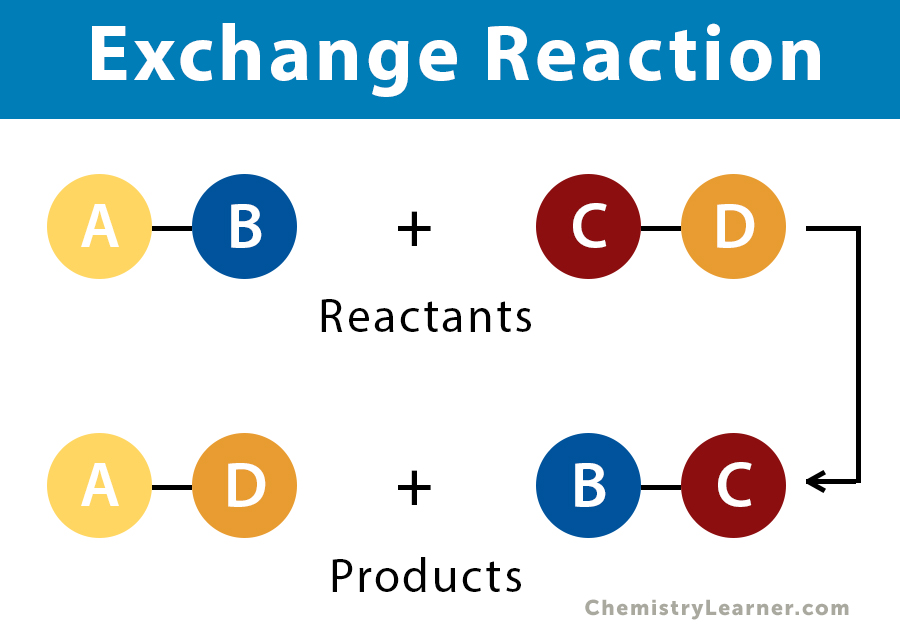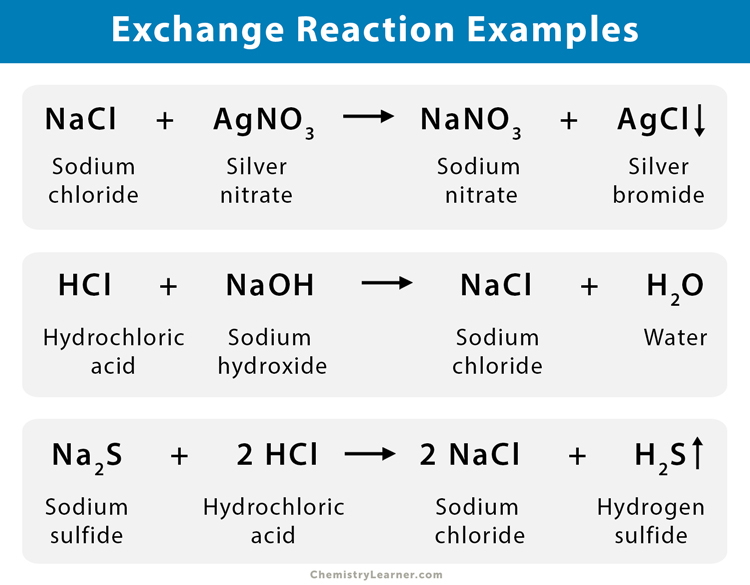Exchange Reaction
What is an Exchange Reaction
An exchange reaction refers to a chemical reaction in which the anions and cations of the reactants exchange their positions in the products. One of the requirements is the products must remain electrically neutral. An exchange reaction will occur when ions in the solution form insoluble products, weak electrolytes, or nonelectrolytes. Because there is an exchange of ions, it is also known as an ion-exchange reaction [1-2].
What Happens in an Exchange Reaction
In an exchange reaction, the cation from the first reactant reacts with the anion from the second reactant. Together, the ions form a new compound. Likewise, the anion from the first component reacts with the cation from the second component to form a new compound.
General Formula for Exchange Reaction
AB + CD → AD + BC
Examples of Exchange Reaction
Here are some examples of the exchange reactions.
1. Precipitation Reaction: This type of reaction occurs when the products are insoluble [3].
Example: Sodium chloride (NaCl) reacts with silver nitrate (AgNO3) to form sodium nitrate (NaNO3) and insoluble silver chloride (AgCl).
NaCl (aq.) + AgNO3 (aq.) → NaNO3 (aq.) + AgCl (s)
A precipitation reaction is a double exchange reaction.
2. Neutralization Reaction: Typically, this reaction occurs between acid and base, with one of the products being water [4].
Example: Hydrochloric acid (HCl) reacts with potassium hydroxide (KOH) to give potassium chloride (KCl) and water (H2O).
HCl (aq.) + KOH (aq.) → KCl (aq.) + H2O (l)
3. Gas Evolution Reaction: This reaction occurs when one of the products is a gas.
Example: When sodium sulfate (Na2SO3) reacts with hydrochloric acid (HCl), the reaction produces sodium chloride (NaCl), water (H2O), and sulfur dioxide (SO2) [5].
Na2SO3 (aq.) + 2 HCl (aq.) → 2 NaCl (aq.) + H2O (l) + SO2 (g)

